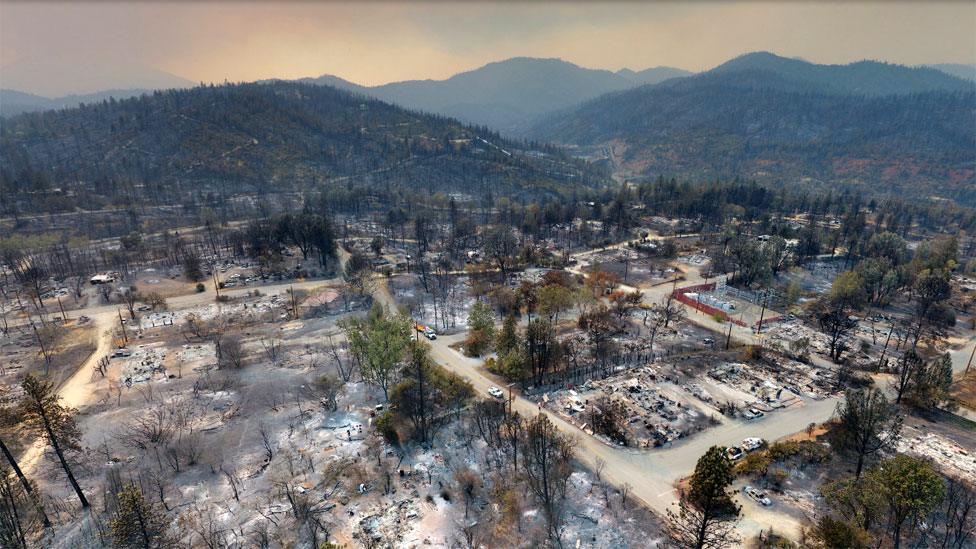California fires: At least 42 die in state's deadliest wildfire
- Published
California wildfires continue to rage
Thirteen more bodies have been recovered in California, bringing the death toll in the US state's deadliest wildfire to 42, officials say.
The remains were found in and around the largely incinerated town of Paradise, in the north of the state.
At least 228 people are missing as the Camp Fire continues to rage. Nearly 7,200 structures have been destroyed, and another 15,500 are at risk.
The fire has now surpassed the 1933 Griffith Park disaster that killed 31.
Speaking at a news conference on Monday evening, Butte County Sheriff Kory Honea confirmed the number of dead, and the official number of missing.
Many more people are said to be unaccounted for.
In the south of the state, other wildfires are menacing lives and property. The Woolsey Fire has so far killed two people, damaging beach resorts, including Malibu.
More than 300,000 locals have been forced to flee their homes across California.
President Donald Trump has declared a "major disaster" in the state, making federal aid available to affected residents.
How did people die?
Paradise and its surrounding areas bore the brunt of the Camp Fire - the largest blaze - which started in nearby forest on Thursday.
Some bodies were found in gutted cars that were overrun by the fast-moving fire, as residents scrambled to evacuate.
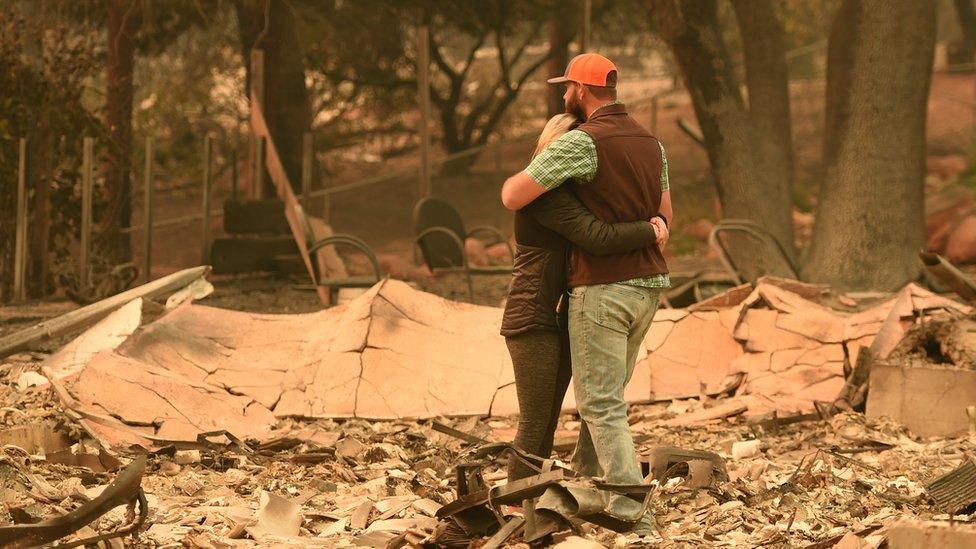
Many of the town's 26,000 residents have had their homes devastated
Sorrell Bobrink, a Paradise resident who managed to drive away with her child, told BBC World Service radio she had first been woken up and alerted by a phone call from a friend.
Describing the scene as "exactly like any apocalyptic movie I have ever seen", she said she had not known if she was driving towards death or out of harm's way as the sky blackened.
"I had to drive through the fire - it was awful. It was probably the most awful experience I will have in my life," she told the Newsday programme.
"It was traumatising, we will be traumatised for a long time. My whole community was traumatised - I can't watch the videos anymore because I actually went through it."
Many of the victims are believed to be elderly residents or people with mobility issues who would find evacuating more difficult.
Fleeing through flames: "I'm so scared right now... so terrified"
Forensic experts are stepping up their search in the ruins of Paradise but officials warn that finding the bodies could take weeks.
Cadaver dogs are being brought in by local police to try and locate the dead, and two mobile army morgues will be used to help identify them.
The fire has burned more than 111,000 acres (45,000 hectares) and is nearly 25% contained, fire officials say.
What about further south?
The separate Woolsey Fire started on Thursday near Thousand Oaks, about 40 miles (64km) north-west of central Los Angeles.
It has consumed at least 85,500 acres and destroyed at least 177 buildings, officials say. It is only 10% contained. The smaller Hill Fire, nearby, has scorched 4,530 acres and is 75% contained.


Luxury homes in Malibu and other beach communities are among the properties destroyed.
The nearby city of Calabasas, home to well-known celebrities, remains under a mandatory evacuation order.
Why are the fires so bad?
Historically, California's "wildfire season" started in summer and ran into early autumn but experts have warned that the risk is now year-round.
With wildfires occurring across the globe, here are some of the techniques used to stop them
The California Public Utilities Commission is investigating what sparked the latest blazes - amid reports electrical companies may have suffered malfunctions near the sources shortly before the fires began.
Low humidity, warm Santa Ana winds and dry ground after a rain-free month have produced a prime fire-spreading environment.
The state's 40 million-strong population also helps explain the fires' deadliness. That number is almost double what it was in the 1970s, and people are living closer to at-risk forest areas.
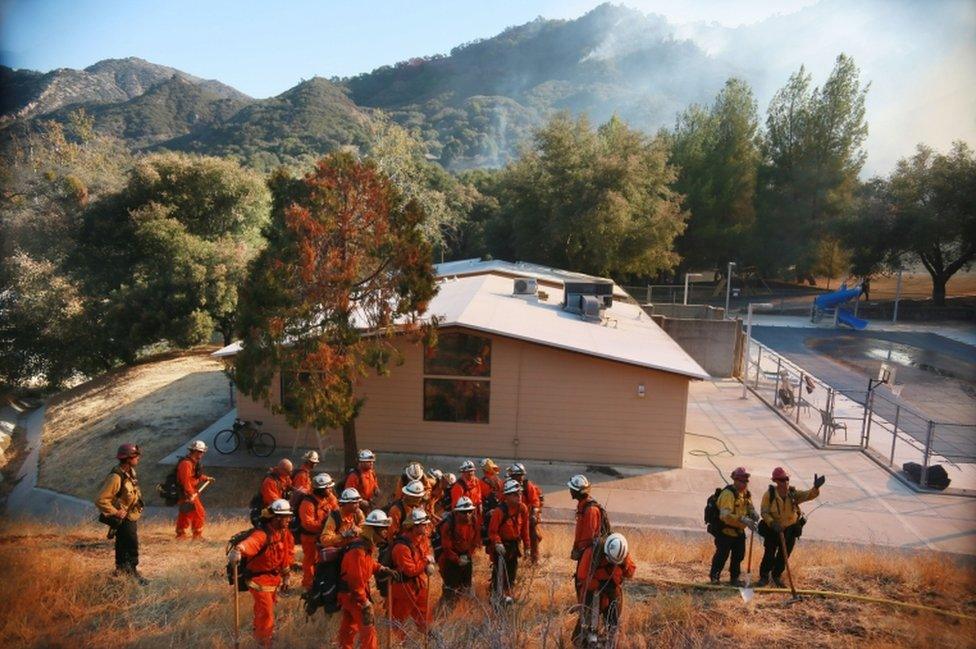
Population density has been growing in areas that used to be sparsely inhabited
And then there is climate change. Recent years have produced record-breaking temperatures, earlier springs and less reliable rainfall.
Citing the role of a warming climate, Governor Jerry Brown declared: "This is not the new normal, this is the new abnormal."
Thousands of firefighters, some from across the US, have been brought in to help battle the blazes.
- Published12 November 2018
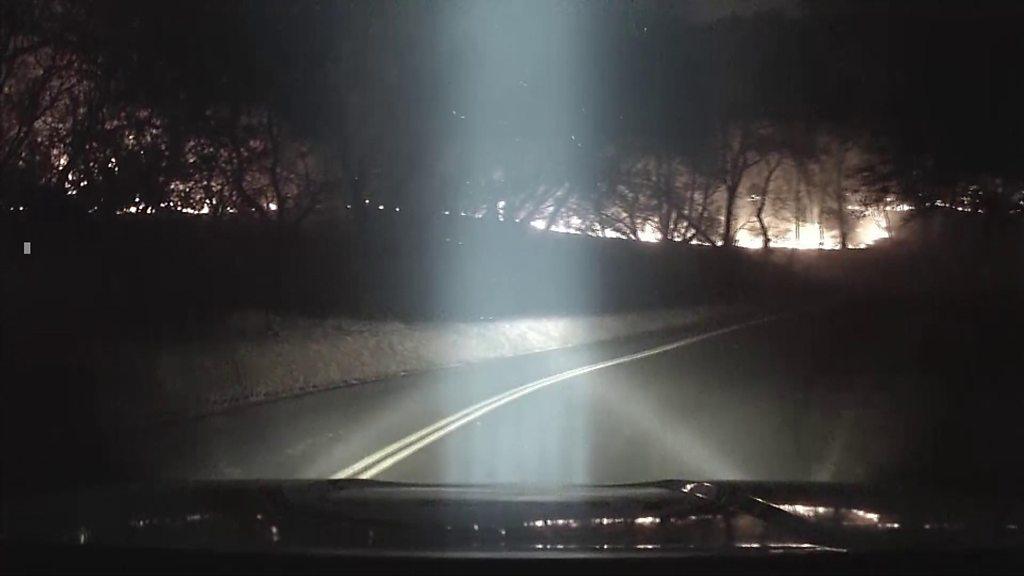
- Published12 November 2018

- Published10 November 2018
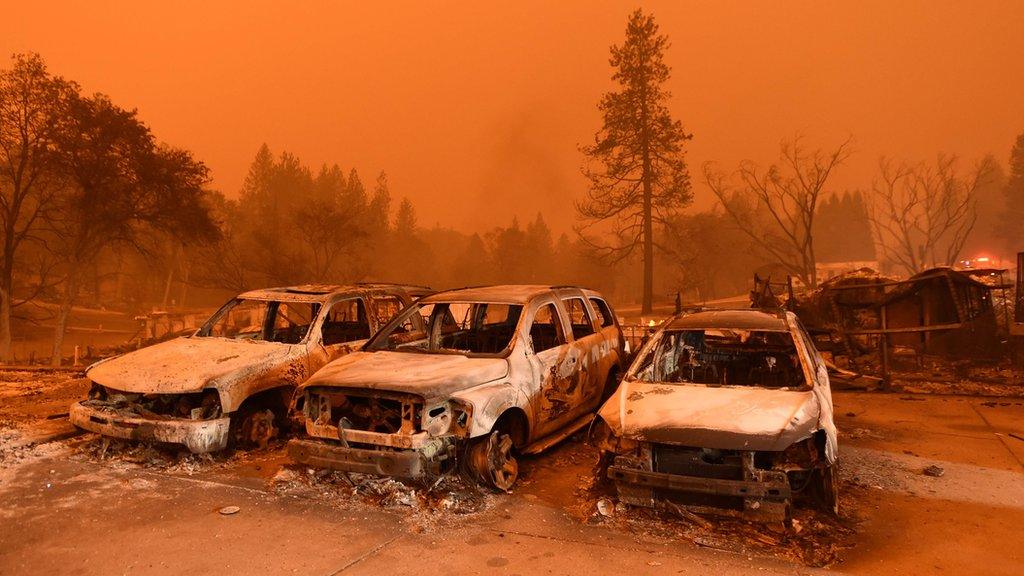
- Published13 October 2017

- Published12 November 2018

- Published10 November 2018
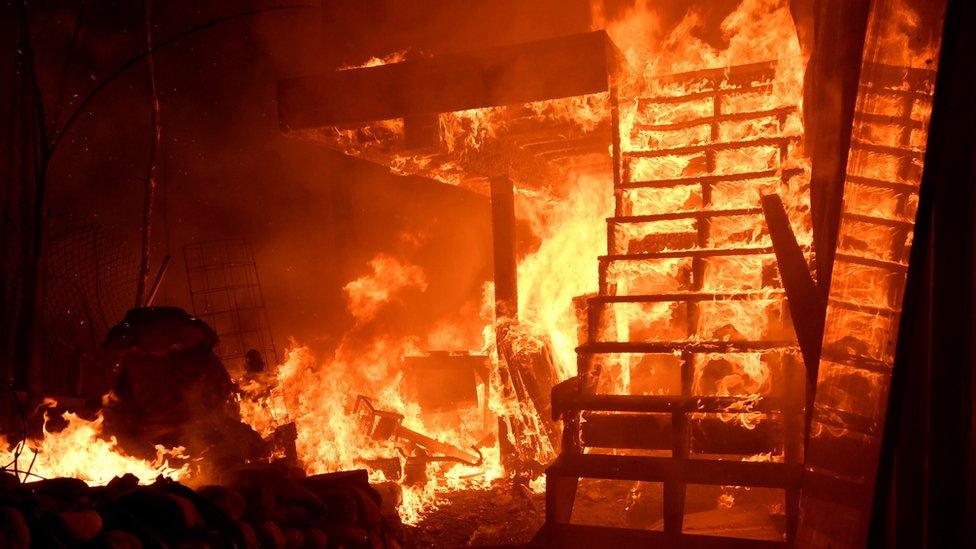
- Published12 November 2018
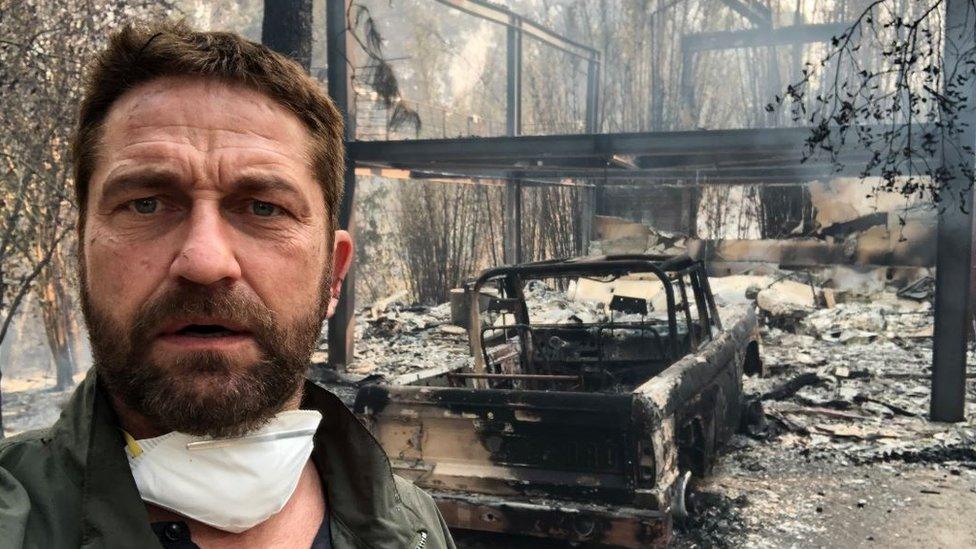
- Published12 November 2018
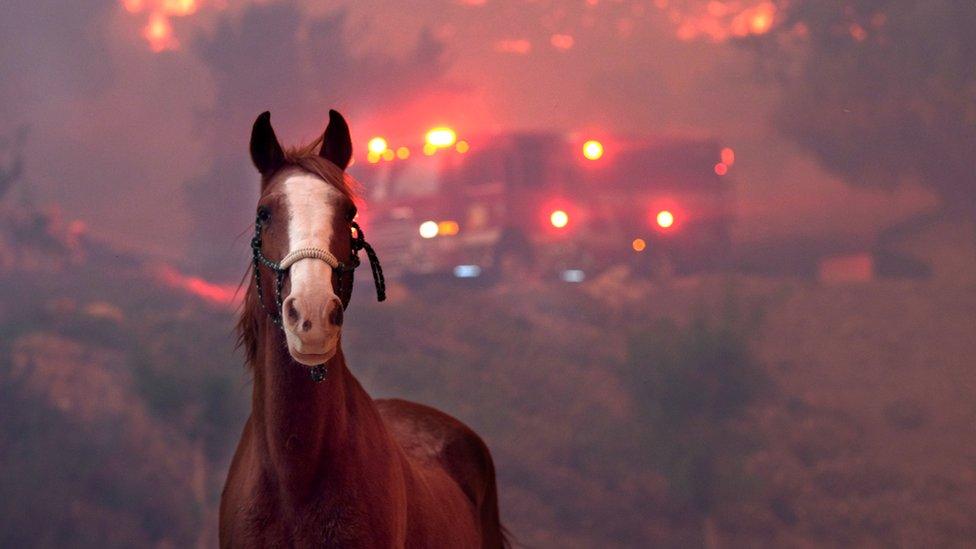
- Published7 August 2018
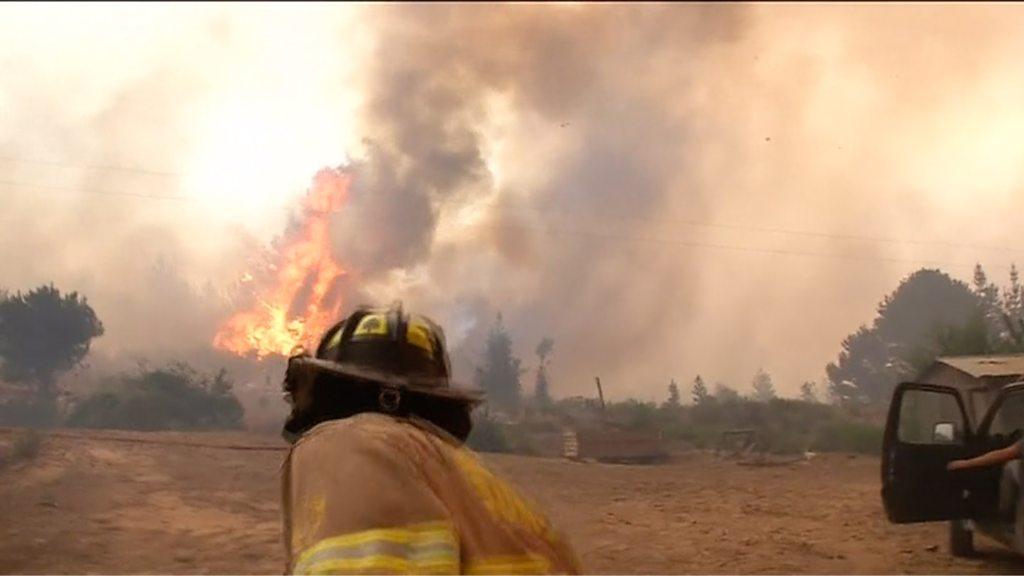
- Published13 December 2017
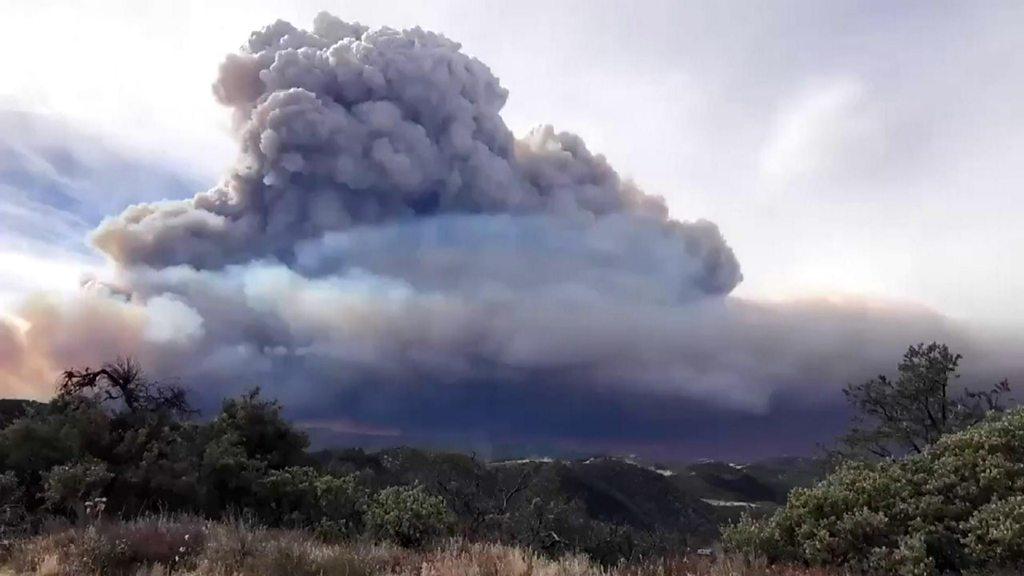
- Published9 August 2018
